 W
WAbrogans, also German Abrogans or Codex Abrogans, is a Middle Latin–Old High German glossary, whose preserved copy in the Abbey Library of St Gall is regarded as the oldest preserved book in the German language.
 W
WThe Atakur inscription dated 949-950 C.E. is an inscribed memorial stone with classical Kannada composition inscription. It was discovered at the Chelleshvara temple at Atakur village about 23 km from Mandya city in the Karnataka state, India. The "motion packed" sculptured hero stone describes two events in poetic Kannada; the battle between "Kali" the hound and a wild boar, and the victory of Rashtrakuta Emperor Krishna III over the Chola dynasty of Tanjore in the famous battle of Takkolam. According to historians I. K. Sarma and Singh memorial stones for warriors are common in medieval India, but one erected in memory of an animal is considered unique.
 W
WThe Bir el Qutt inscriptions are the Old Georgian Byzantine mosaic inscriptions written in the Georgian Asomtavruli script which were excavated at a St. Theodore Georgian monastery in 1952 by Italian archaeologist Virgilio Canio Corbo near Bir el Qutt, in the Judaean Desert, 6 km south-east of Jerusalem and 2 km north of Bethlehem. The whole complex was built of reddish limestone.
 W
WThe Black Book of Carmarthen is thought to be the earliest surviving manuscript written solely in Welsh. The book dates from the mid-13th century; its name comes from its association with the Priory of St. John the Evangelist and Teulyddog at Carmarthen, and is referred to as black due to the colour of its binding. It is currently part of the collection of the National Library of Wales, where it is catalogued as NLW Peniarth MS 1.
 W
WThe Book of Henryków is a Latin chronicle of the Cistercian abbey in Henryków in Lower Silesia. Originally created as a registry of belongings looted during the Mongol raids of 1241, with time it was extended to include the history of the monastery. It is notable as the earliest document to include a sentence written entirely in what can be interpreted as an Old Polish language. Currently the book is on exhibition in the Archdiocesan Museum in Wrocław. On October 9, 2015 the Book of Henryków was entered in the list of UNESCO's "Memory of the World".
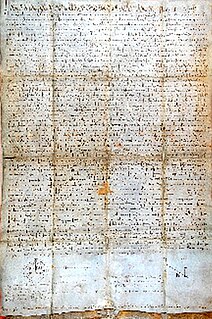 W
WEx commisso nobis, more commonly known as the Bull of Gniezno, was a papal bull issued on July 7, 1136 by Pope Innocent II. The bull split off the Bishopric of Gniezno from the Archbishop of Magdeburg. From a historical perspective, the bull is especially important as it contains the earliest written record of the Polish language. Slavic language scholar Aleksander Brückner called the document a "złota bulla języka polskiego".
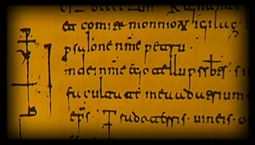 W
WThe cartularies of Valpuesta are two medieval Spanish cartularies which belonged to a monastery in the locality of Valpuesta in what is now the province of Burgos, Castile and León, Spain. The cartularies are called the Gótico and the Galicano from the type of script used in each. They are housed in the National Archives of Spain.
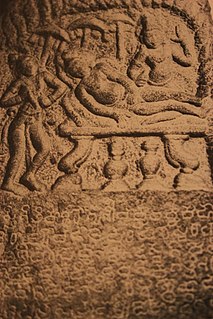 W
WThe Doddahundi nishidhi and inscription is a hero stone from Doddahundi, 18 km from Tirumakudalu Narasipura in the Mysore district, Karnataka state, India. It has an undated old Kannada language inscription which historians J. F. Fleet, I. K. Sarma and E.P. Rice have dated by context to 840 or 869 C.E. The hero stone has a unique depiction in frieze of the ritual death of the Western Ganga Dynasty king Ereganga Nitimarga I. The memorial was raised by the king's son Satyavakya. Such nishidhi's were raised in medieval India in honor of important Jain personalities who ended their life voluntarily after following severe ritual vow. The Western Ganga period produced not only imposing and well sculptured pillars (stambha) but also noteworthy hero stones (virgal) with exceptional relief. According to historian and epigraphist J. F. Fleet who edited the inscription, the names in the record are titles and not personal names. He dated the inscription to 840 C.E. with the opinion that the Nitimarga in the inscription is actually Ranavikrama, son of King Sripurusha.
 W
WThe Duenos inscription is one of the earliest known Old Latin texts, variously dated from the 7th to the 5th century BC. It is inscribed on the sides of a kernos, in this case a trio of small globular vases adjoined by three clay struts. It was found by Heinrich Dressel in 1880 on the Quirinal Hill in Rome. The kernos is part of the collection of the Staatliche Museen in Berlin.
 W
WThe establishing charter of the abbey of Tihany is a document known for including the oldest written words in the Hungarian language. The document, dated to 1055, lists the lands the king donated to the newly founded Tihany Abbey. It is mostly in Latin, but contains several Hungarian words and expressions, the longest of which is feheruuaru rea meneh hodu utu rea.
 W
WThe Freising manuscripts are the first Latin-script continuous text in a Slavic language and "the oldest document in Slovene".
 W
WThe Funeral Sermon and Prayer is the oldest known and surviving contiguous Hungarian text, written by one scribal hand in the Latin script and dating to 1192–1195. It is found on f.154a of the Codex Pray.
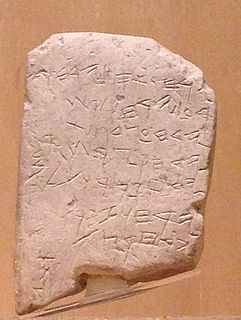 W
WThe Gezer calendar is a small limestone tablet with an early Canaanite inscription discovered in 1908 by Irish archaeologist R. A. Stewart Macalister in the ancient city of Gezer, 20 miles west of Jerusalem. It is commonly dated to the 10th century BCE, although the excavation was unstratified and its identification during the excavations was not in a "secure archaeological context", presenting uncertainty around the dating.
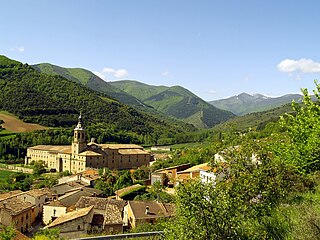 W
WThe Glosas Emilianenses are glosses written in a Latin codex. These marginalia are important as early examples of writing in a form of Romance similar to Spanish, and in Basque. The anonymous author is assumed to have been a monk at the monastery now known as Suso, one of the twin monasteries of San Millán de la Cogolla. He wrote about a thousand years ago in three languages:A simplified version of Latin The medieval form of a Hispanic Romance language ; Medieval Basque
 W
WThe Halmidi inscription is the oldest known Kannada language inscription in the Kadamba script. While estimates vary slightly, the inscription is often dated to between 450 CE - 500 CE. The inscription was discovered in 1936 by Dr. M. H. Krishna, the Director of Archaeology of the (princely) State of Mysore, in Halmidi, a village in the Hassan district.
 W
WIl-Kantilena is the oldest known literary text in the Maltese language. It dates from the 15th century but was not found until 1966 by historians Godfrey Wettinger and Mikiel Fsadni. The poem is attributed to Pietru Caxaro, and was recorded by Caxaro's nephew, Brandano, in his notarial register. It is preserved at the Notarial Archives in Valletta.
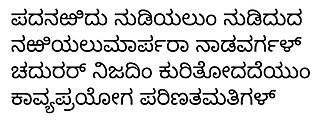 W
WKavirajamarga is the earliest available work on rhetoric, poetics and grammar in the Kannada language. It was inspired by or written in part by the famous Rashtrakuta King Amoghavarsha I, and some historians claim it is based partly on the Sanskrit text Kavyadarsha. Some historians believe Kavirajamarga may have been co-authored by a poet in the king's court, the Kannada language theorist Sri Vijaya.
 W
WThe Kedukan Bukit inscription is an inscription discovered by the Dutchman C.J. Batenburg on 29 November 1920 at Kedukan Bukit, South Sumatra, Indonesia, on the banks of Tatang River, a tributary of Musi River. It is the oldest surviving specimen of the Malay language, in a form known as Old Malay. It is a small stone of 45 cm × 80 cm. This inscription is dated 1 May 683 CE. This inscription was written in Pallava script.
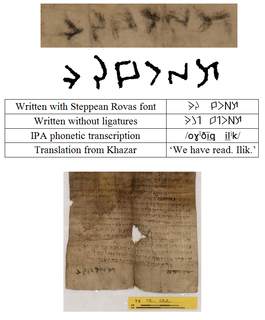 W
WThe Kievan Letter, or Kyivan letter is an early 10th-century letter thought to be written by representatives of the Jewish community in Kiev. The letter, a Hebrew-language recommendation written on behalf of one member of their community, was part of an enormous collection brought to Cambridge by Solomon Schechter from the Cairo Geniza. It was discovered in 1962 during a survey of the Geniza documents by Norman Golb of the University of Chicago. The letter is dated by most scholars to around 930 CE. Some think that the letter dates from a time when Khazars were no longer a dominant force in the politics of the city. According to Marcel Erdal, the letter does not come from Kyiv but was sent to Kyiv.
 W
WMyazedi inscription, inscribed in 1113, is the oldest surviving stone inscription of the Burmese. "Myazedi" means "emerald stupa", and the name of the inscription comes from a pagoda located nearby. The inscriptions were made in four languages: Burmese, Pyu, Mon, and Pali, which all tell the story of Prince Yazakumar and King Kyansittha. The primary importance of the Myazedi inscription is that the inscriptions allowed for the deciphering of the written Pyu language.
 W
WNeacșu's letter, written in 1521, is the oldest surviving document available in Old Romanian that can be reliably dated. Written using Cyrillic, it was sent by Lupu Neacșu, a merchant from Câmpulung, Wallachia to Johannes Benkner, the mayor of Brassó, Kingdom of Hungary, warning him about the imminent attack of the Ottoman Empire on Transylvania.
 W
WNestor's cup is an eighth century BC wine cup discovered in 1954 in Lacco Ameno on Ischia, the ancient Pithekoussai, an island in the Gulf of Naples (Italy). The cup has a three-line inscription, one of the earliest surviving examples of writing in the Greek alphabet.
 W
WThe Novgorod Codex is the oldest book of the Rus’, unearthed on July 13, 2000 in Novgorod. It is a palimpsest consisting of three bound wooden tablets containing four pages filled with wax, on which its former owner wrote down dozens, probably hundreds of texts during two or three decades, each time wiping out the preceding text.
 W
WThe Placiti Cassinesi are four official juridical documents written between 960 and 963 in southern Italy, regarding a dispute on several lands among three Benedictine monasteries and a local landowner. They are considered the first extant documents written in a Romance vernacular of Italy, along with the Veronese Riddle and the Commodilla catacomb inscription.
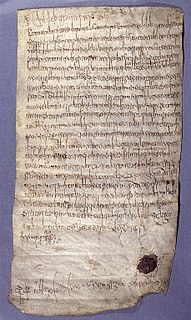 W
WThe Salic law, or the Salian law, was the ancient Salian Frankish civil law code compiled around AD 500 by the first Frankish King, Clovis. The written text is in Latin and contains some of the earliest known instances of Old Dutch. It remained the basis of Frankish law throughout the early Medieval period, and influenced future European legal systems. The best-known tenet of the old law is the principle of exclusion of women from inheritance of thrones, fiefs and other property. The Salic laws were arbitrated by a committee appointed and empowered by the King of the Franks. Dozens of manuscripts dating from the sixth to eighth centuries and three emendations as late as the ninth century have survived.
 W
WThe Sawlumin inscription is one of the oldest surviving stone inscriptions in Myanmar. The slabs were mainly inscribed in Burmese, Pyu, Mon and Pali, and a few lines in Sanskrit. According to an early analysis, the stele was founded in 1079 by King Saw Lu of Pagan (Bagan).
 W
WThe Sheep Letter is the oldest surviving document of the Faroe Islands. It is a Royal Decree enacted on the 28 June 1298 by Duke Haakon who later became King Haakon IV of Norway. It deals principally with sheep husbandry, but also dealt with other matters and functioned as a kind of constitution, removing most administrative power from the local Thing to the king and his representatives. it was drafted on the advice of Erlend, Bishop of the Diocese of the Faroe Islands in Kirkjubøur and of Sigurd, Lawspeaker of Shetland, whom Duke Haakon had sent to the Faroes to consider the deficiencies in the agricultural law.
 W
WThe Sinkang Manuscripts are a series of leases, mortgages, and other commerce contracts written in Sinckan, Taivoan, and Makatao; they are commonly referred to as the "fanzi contracts". Some are written only in a romanized script, while others were bilingual with adjacent Han writing. Currently there are approximately 140 extant documents written in Sinckan; they are important in the study of Siraya and Taivoan culture, and Taiwanese history in general although there are only a few scholars who can understand them.
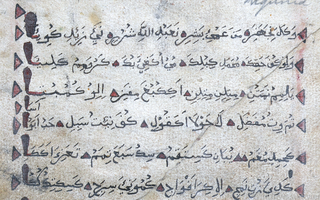 W
WUtend̠i wa Tambuka, also known as Utenzi wa Tambuka, Utenzi wa Hirqal or Kyuo kya Hereḳali, is an epic poem in the Swahili language, dated 1728. It is one of the earliest known documents in Swahili.
 W
WVästgötalagen is the oldest Swedish text written in Latin script and the oldest of all Swedish provincial laws. It was compiled in the early 13th century, probably at least partly at the instigation of Eskil Magnusson and was the code of law used in the provinces of Västergötland and Dalsland and in Mo härad during the latter half of that century. The earliest complete text is dated 1281. Small fragments of an older text have been dated 1250.
 W
WThe Veronese Riddle is a riddle written in late Vulgar Latin on the margin of a parchment, on the Verona Orational, probably in the 8th or early 9th century, by a Christian monk from Verona, in northern Italy. It is an example of the internationally widespread writing-riddle, very popular in the Middle Ages and still in circulation in recent times. Discovered by Luigi Schiaparelli in 1924, it is considered the oldest existing document in the Romance of Italy, along with the Placiti Cassinesi.